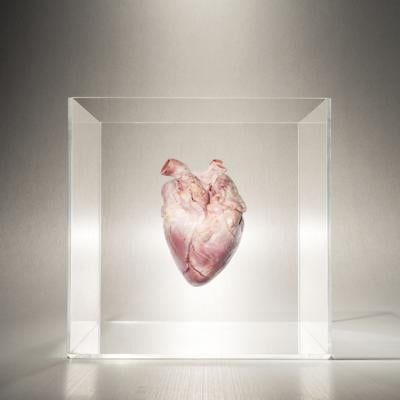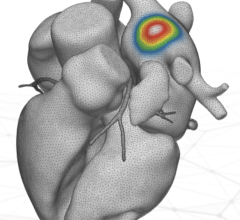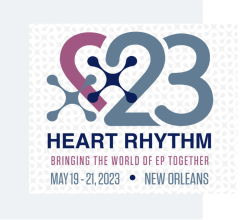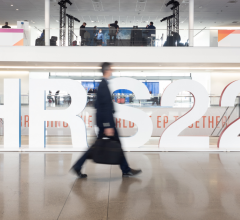
Getty Images
May 22, 2023 — Findings from two new studies highlight the success of left bundle branch area pacing (LBBAP), or his-bundle pacing (HBP) as an alternative to biventricular pacing (BVP) for patients requiring cardiac resynchronization therapy (CRT). The results add to the growing body of evidence supporting new pacing methods and were presented as late-breaking clinical trials during Heart Rhythm 2023.
Today, heart failure impacts more than 64 million people worldwide1. CRT is a treatment option that uses a pacemaker to restore heart rhythm among patients with heart failure or conduction irregularities. While BVP is an established treatment method for patients who require CRT, LBBAP is emerging as an alternative solution that can effectively deliver cardiac pacing. Physicians continuously compare the two conduction therapies to deliver improved patient care and explore safe treatment options for heart failure patient
The findings of the following two studies highlight the efficacy of LBBAP and HBVP as alternative treatment options to biventricular pacing for patients undergoing CRT.
- His-Purkinje conduction system pacing Optimized Trial of Cardiac Resynchronization Therapy versus biventricular pacing: A randomized controlled clinical trial (HOTCRT): This randomized controlled trial was designed to evaluate the efficacy of conduction system pacing guided resynchronization (HOT-CRT) and BVP CRT in patients with left ventricular ejection fraction (LVEF) <50% and class I or II indications for CRT. Among the 100 randomized patients, HOT-CRT was successful in 48/50 (96%) and BVP-CRT in 41/50 (82%). In this pilot study, HOT-CRT was associated with greater improvement in left ventricular ejection fraction compared to BVP (12.4% vs 8% increase, p=0.02) at 6 months. The efficiency of HOT-CRT requires further validation by larger prospective multicenter randomized controlled trials with longer follow-up periods.
"This randomized trial demonstrated a strong rate of success between both LBBP and BVP therapies. When looking at both CRT options, we believe this should be a positive signal for physicians who are recommending His-Purkinje conduction system pacing as a treatment for their patients,” said Dr. Pugazhendhi Vijayaraman, Geisinger Heart Institute, Wilkes-Barre, Pennsylvania. “We hope the results of this trial will give physicians an alternative option for consideration that will ultimately improve clinical outcomes and overall patient care.”"
- Left Bundle Branch Area Pacing Compared To Biventricular Pacing For Cardiac Resynchronization Therapy: Results From International LBBAP Collaborative Study Group: The study observed 1778 patients from 15 centers across the globe who underwent BVP (981) or LBBAP (797) for the first time for CRT with LVEF≤35%. Paced QRSd (ms) in LBBAP was significantly narrower than baseline (128±19 vs 161±28, p<0.001) and significantly narrower compared to BVP (144±23, p<0.001). LVEF improved during f/u in both groups and was greater in LBBAP compared to BVP (41±13 vs 37±12%, p<0.001). The study supported LBBAP as a promising alternative that may result in superior resynchronization compared to the traditional BVP in patients requiring CRT.
"While previous observational data has shown how LBBAP can improve clinical outcomes for patients with class I or II indications for CRT, this trial includes one of the largest series of patients to date. Although traditional BVP set a high standard of care for patients, these findings add to the growing body of evidence showing LBBAP as a successful CRT option that is being seen more frequently in centers across the globe,” said Dr. Pugazhendhi Vijayaraman Geisinger Heart Institute, Wilkes-Barre, Pennsylvania. “While we are encouraged by the results, we believe randomized controlled trials are needed further to compare LBBAP and BVP."
The trials were presented at respective late-breaking clinical trial sessions on Saturday, May 20, and Sunday, May 21.
1 Savarese G, Becher PM, Lund LH, Seferovic P, Rosano GMC, Coats AJS. Global burden of heart failure: a comprehensive and updated review of epidemiology. Cardiovasc Res. 2023 Jan 18;118(17):3272-3287. doi: 10.1093/cvr/cvac013. Erratum in: Cardiovasc Res. 2023 Feb 09: PMID: 35150240.
For more information: www.hrsonline.org


 July 30, 2024
July 30, 2024 









